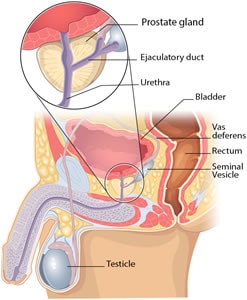National Young Adult Cancer Awareness Week is held each year in April. It is a time to draw awareness in your community and highlight the needs, issues, and challenges of young adults diagnosed with cancer between the ages of 15 to 39. It is also a great time to share all about the great work being done by patient advocates and healthcare champions on their behalf.
Cancer is not the same old cancer it was generations ago. Cancer for babies and geriatrics is old an busted. The new hotness is young adult cancer. The average age for this type of cancer is 15 to 39 years old. Survival rates for young adults have barely budged since the 60s' 70's On the other hand improvements to cancer for older generation has improved.
Cancer is no longer a disease of the aged. The rate in young adults is rising. The National Cancer Institute shares stats that show more young adults today being diagnosed with cancer than any other age group in the U.S. Cancer is the number one disease killer among young adults. An estimated 69,212 adolescents and young adults age 15 to 39 were diagnosed with cancer in 2011. This number was six times the number of cases diagnosed in children ages 0 to 14. The specific cancer types included leukemia, lymphoma, testicular cancer, anthyroid cancer and others. Breast cancer and melanoma grew by number in those ages 25 to 39.
Prostate cancer rates #2 as the most common cancer among men. The top is that of skin cancer. It is the second most common cause of death from cancer among white, african american, american indian and hispanic men Most cases of prostate cancer can be and are treated successfully. There are more than 2 million men in the U.S. that can be counted as prostate cancer survivors.
Prostate cancer starts out and grows slowly. A prostate specific antigen test may be able to find a prostate health problem. Treatment can come with serious side effects. Men with tumors that have not spread beyond the prostate die of other causes without ever having any symptoms from the cancer.
The prostate is a part of the male reproductive system. The system includes the penis, prostate and testicles. It is located just below the bladder and in front of the rectum. The prostate is the size of a walnut and surrounds the urethra (the tube that empties urine from the bladder) The prostate produces fluid that helps create semen.
The older a man gets the larger the prostate grows. The problem occurs when the urethra become narrow and decreases urine flow. This process is known as benign prostatic hyperplasia and it is not the same as prostate cancer. There are other changes that may take place with the prostate that is not cancer.
Risk Factors
The older a man gets the greater his risk of prostate cancer
There are genes that are passed from parent to offspring that can affect the risk of prostate cancer. There is no single gene that has been found to raise or lower the risk of prostate cancer. A man with a brother, father or son with prostate cancer is 2-3 times more likely to develop the disease himself.
Race comes into the game as well as some racial and ethnic groups are more at risk than others
Symptoms
- Difficulty starting urination.
- Weak or interrupted flow of urine.
- Frequent urination, especially at night.
- Difficulty emptying the bladder completely.
- Pain or burning during urination.
- Blood in the urine or semen.
- Pain in the back, hips, or pelvis that doesn’t go away.
- Painful ejaculation.
If you have any symptoms that worry you be sure to see your doctor right away. There are other conditions that may cause these same symptoms but better safe than sorry




No comments:
Post a Comment
I love comments so if you have a minute leave me your thoughts on the above post